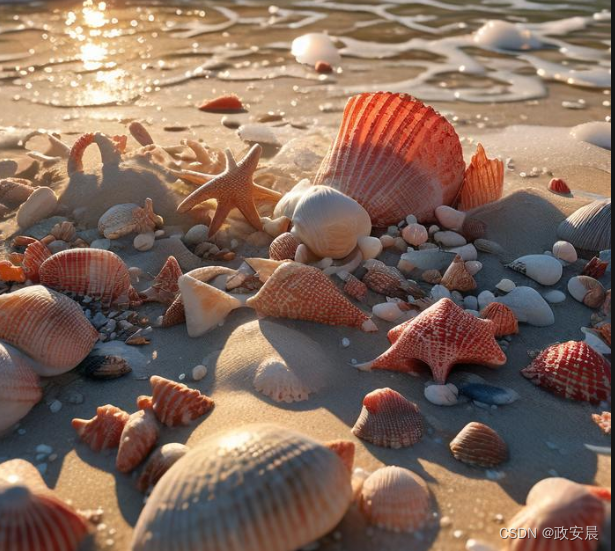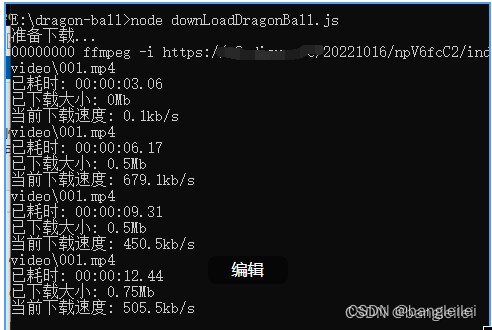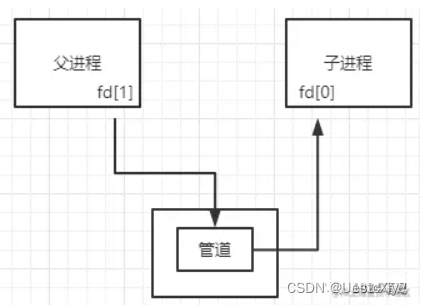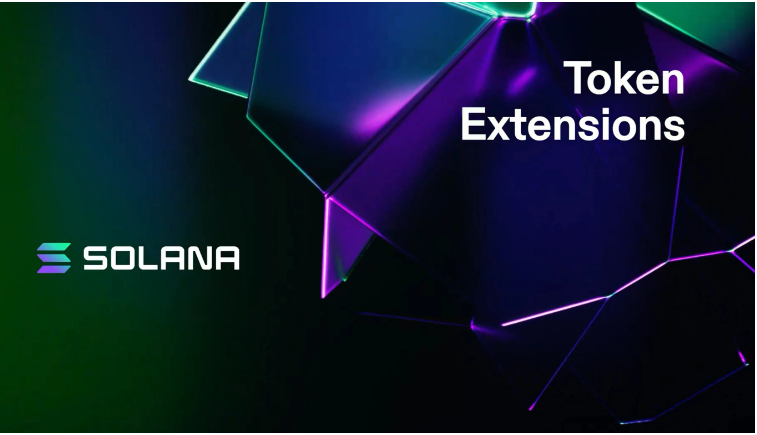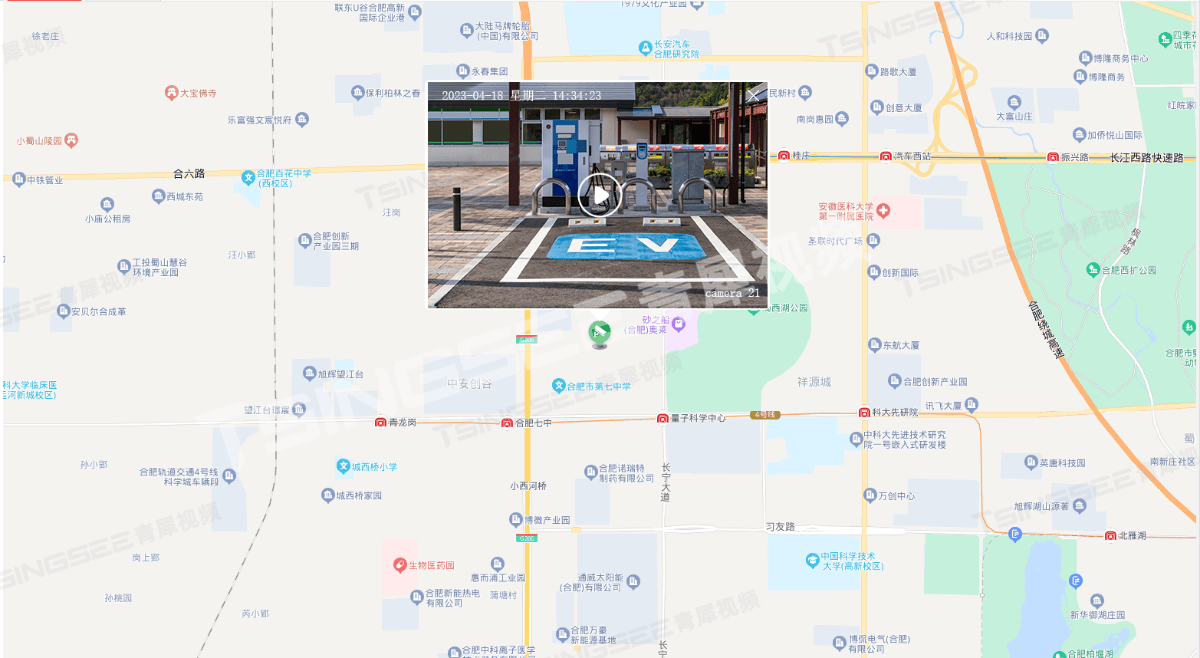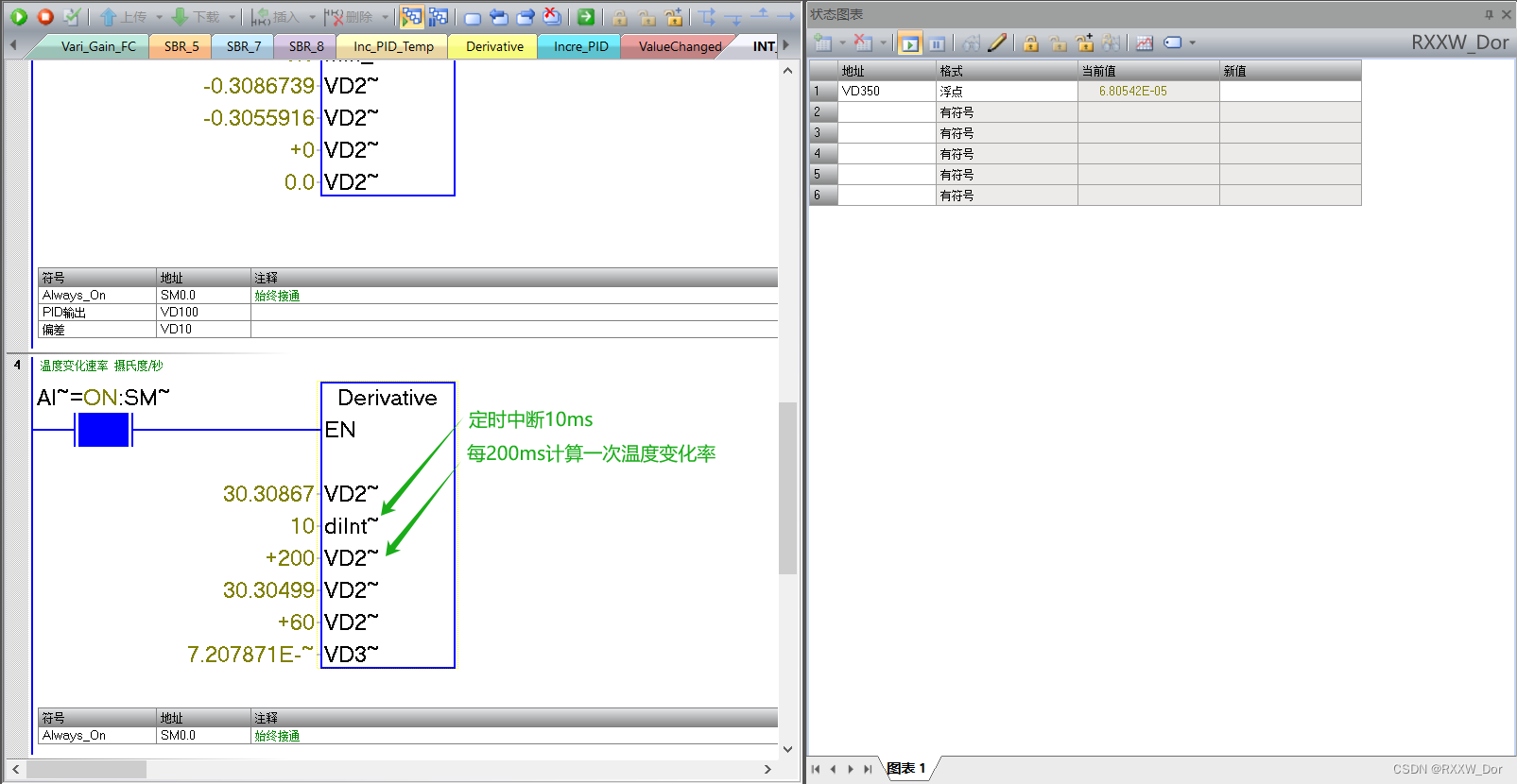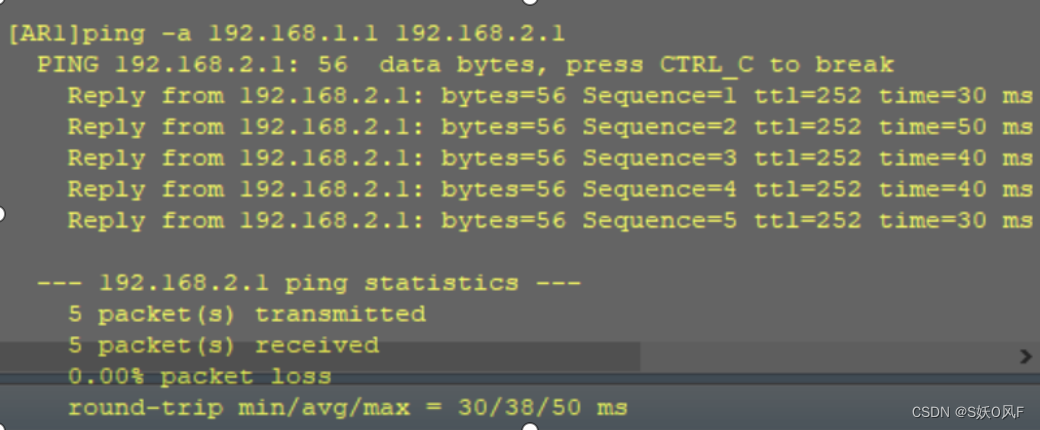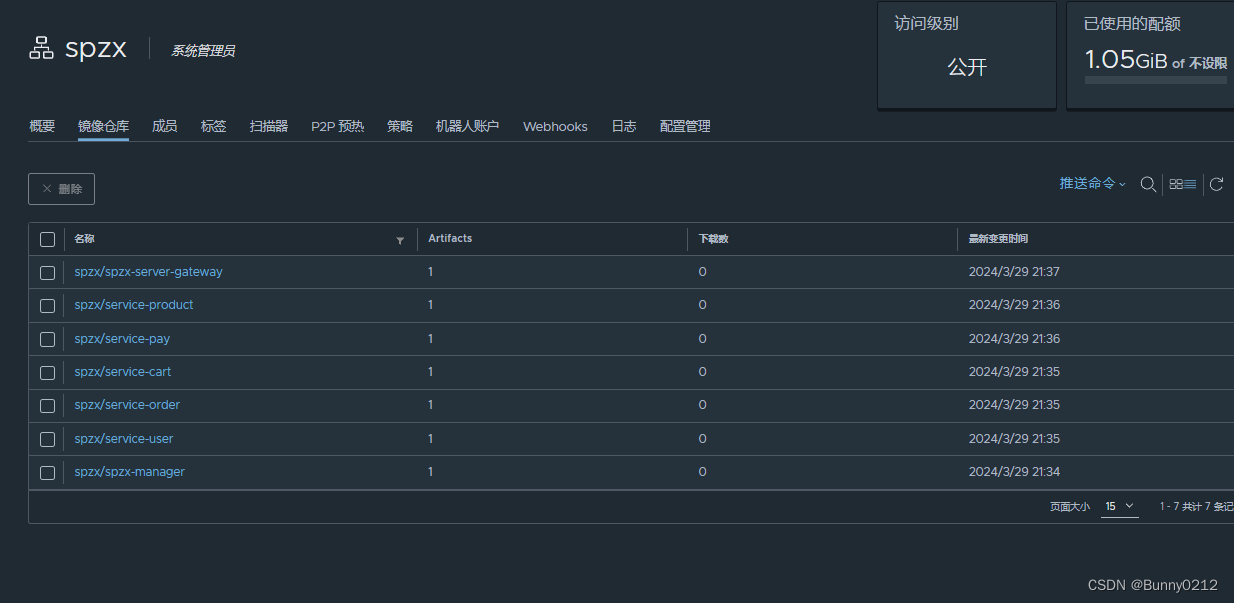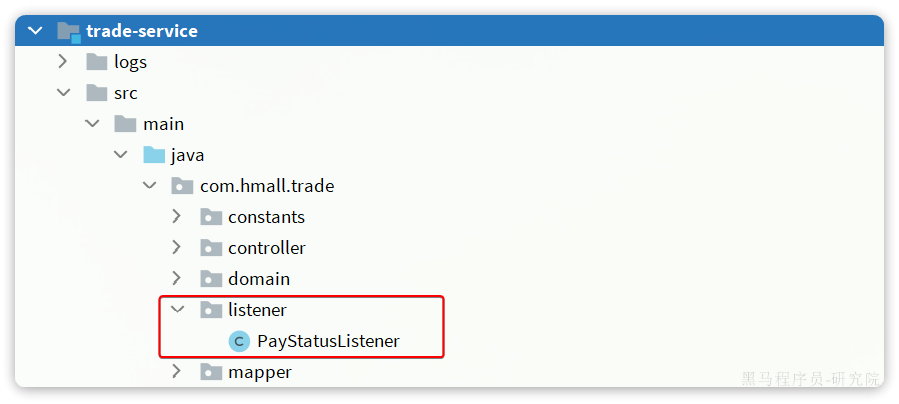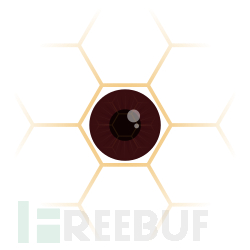基本思想:需求部署yolov8目标检测和旋转目标检测算法部署atlas 200dk 开发板上
一、转换模型 链接: https://pan.baidu.com/s/1hJPX2QvybI4AGgeJKO6QgQ?pwd=q2s5 提取码: q2s5
from ultralytics import YOLO
# Load a model
model = YOLO("yolov8s.yaml") # build a new model from scratch
model = YOLO("yolov8s.pt") # load a pretrained model (recommended for training)
# Use the model
results = model(r"F:\zhy\Git\McQuic\bus.jpg") # predict on an image
path = model.export(format="onnx") # export the model to ONNX format精简模型
(base) root@davinci-mini:~/sxj731533730# python3 -m onnxsim yolov8s.onnx yolov8s_sim.onnx
Simplifying...
Finish! Here is the difference:
┏━━━━━━━━━━━━┳━━━━━━━━━━━━━━━━┳━━━━━━━━━━━━━━━━━━┓
┃ ┃ Original Model ┃ Simplified Model ┃
┡━━━━━━━━━━━━╇━━━━━━━━━━━━━━━━╇━━━━━━━━━━━━━━━━━━┩
│ Add │ 9 │ 8 │
│ Concat │ 19 │ 19 │
│ Constant │ 22 │ 0 │
│ Conv │ 64 │ 64 │
│ Div │ 2 │ 1 │
│ Gather │ 1 │ 0 │
│ MaxPool │ 3 │ 3 │
│ Mul │ 60 │ 58 │
│ Reshape │ 5 │ 5 │
│ Resize │ 2 │ 2 │
│ Shape │ 1 │ 0 │
│ Sigmoid │ 58 │ 58 │
│ Slice │ 2 │ 2 │
│ Softmax │ 1 │ 1 │
│ Split │ 9 │ 9 │
│ Sub │ 2 │ 2 │
│ Transpose │ 1 │ 1 │
│ Model Size │ 42.8MiB │ 42.7MiB │
└────────────┴────────────────┴──────────────────┘
使用huawei板子进行转换模型
(base) root@davinci-mini:~/sxj731533730# atc --model=yolov8s.onnx --framework=5 --output=yolov8s --input_format=NCHW --i
nput_shape="images:1,3,640,640" --log=error --soc_version=Ascend310B1
配置pycharm professional
pycharm professional 设置
/usr/local/miniconda3/bin/python3
LD_LIBRARY_PATH=/usr/local/Ascend/ascend-toolkit/latest/lib64:/usr/local/Ascend/ascend-toolkit/latest/lib64/plugin/opskernel:/usr/local/Ascend/ascend-toolkit/latest/lib64/plugin/nnengine:$LD_LIBRARY_PATH;PYTHONPATH=/usr/local/Ascend/ascend-toolkit/latest/python/site-packages:/usr/local/Ascend/ascend-toolkit/latest/opp/op_impl/built-in/ai_core/tbe:$PYTHONPATH;PATH=/usr/local/Ascend/ascend-toolkit/latest/bin:/usr/local/Ascend/ascend-toolkit/latest/compiler/ccec_compiler/bin:$PATH;ASCEND_AICPU_PATH=/usr/local/Ascend/ascend-toolkit/latest;ASCEND_OPP_PATH=/usr/local/Ascend/ascend-toolkit/latest/opp;TOOLCHAIN_HOME=/usr/local/Ascend/ascend-toolkit/latest/toolkit;ASCEND_HOME_PATH=/usr/local/Ascend/ascend-toolkit/latest
/usr/local/miniconda3/bin/python3.9 /home/sxj731533730/sgagtyeray.py测试代码pyhon
import ctypes
import os
import shutil
import random
import sys
import threading
import time
import cv2
import numpy as np
import numpy as np
import cv2
from ais_bench.infer.interface import InferSession
class_names = ['person', 'bicycle', 'car', 'motorcycle', 'airplane', 'bus', 'train', 'truck', 'boat', 'traffic light',
'fire hydrant', 'stop sign', 'parking meter', 'bench', 'bird', 'cat', 'dog', 'horse', 'sheep', 'cow',
'elephant', 'bear', 'zebra', 'giraffe', 'backpack', 'umbrella', 'handbag', 'tie', 'suitcase', 'frisbee',
'skis', 'snowboard', 'sports ball', 'kite', 'baseball bat', 'baseball glove', 'skateboard', 'surfboard',
'tennis racket', 'bottle', 'wine glass', 'cup', 'fork', 'knife', 'spoon', 'bowl', 'banana', 'apple',
'sandwich', 'orange', 'broccoli', 'carrot', 'hot dog', 'pizza', 'donut', 'cake', 'chair', 'couch',
'potted plant', 'bed', 'dining table', 'toilet', 'tv', 'laptop', 'mouse', 'remote', 'keyboard',
'cell phone', 'microwave', 'oven', 'toaster', 'sink', 'refrigerator', 'book', 'clock', 'vase',
'scissors', 'teddy bear', 'hair drier', 'toothbrush']
# Create a list of colors for each class where each color is a tuple of 3 integer values
rng = np.random.default_rng(3)
colors = rng.uniform(0, 255, size=(len(class_names), 3))
model_path = 'yolov8s.om'
IMG_PATH = 'bus.jpg'
conf_threshold = 0.5
iou_threshold = 0.4
input_w=640
input_h=640
def get_img_path_batches(batch_size, img_dir):
ret = []
batch = []
for root, dirs, files in os.walk(img_dir):
for name in files:
if len(batch) == batch_size:
ret.append(batch)
batch = []
batch.append(os.path.join(root, name))
if len(batch) > 0:
ret.append(batch)
return ret
def plot_one_box(x, img, color=None, label=None, line_thickness=None):
"""
description: Plots one bounding box on image img,
this function comes from YoLov8 project.
param:
x: a box likes [x1,y1,x2,y2]
img: a opencv image object
color: color to draw rectangle, such as (0,255,0)
label: str
line_thickness: int
return:
no return
"""
tl = (
line_thickness or round(0.002 * (img.shape[0] + img.shape[1]) / 2) + 1
) # line/font thickness
color = color or [random.randint(0, 255) for _ in range(3)]
c1, c2 = (int(x[0]), int(x[1])), (int(x[2]), int(x[3]))
cv2.rectangle(img, c1, c2, color, thickness=tl, lineType=cv2.LINE_AA)
if label:
tf = max(tl - 1, 1) # font thickness
t_size = cv2.getTextSize(label, 0, fontScale=tl / 3, thickness=tf)[0]
c2 = c1[0] + t_size[0], c1[1] - t_size[1] - 3
cv2.rectangle(img, c1, c2, color, -1, cv2.LINE_AA) # filled
cv2.putText(
img,
label,
(c1[0], c1[1] - 2),
0,
tl / 3,
[225, 255, 255],
thickness=tf,
lineType=cv2.LINE_AA,
)
def preprocess_image( raw_bgr_image):
"""
description: Convert BGR image to RGB,
resize and pad it to target size, normalize to [0,1],
transform to NCHW format.
param:
input_image_path: str, image path
return:
image: the processed image
image_raw: the original image
h: original height
w: original width
"""
image_raw = raw_bgr_image
h, w, c = image_raw.shape
image = cv2.cvtColor(image_raw, cv2.COLOR_BGR2RGB)
# Calculate widht and height and paddings
r_w = input_w / w
r_h = input_h / h
if r_h > r_w:
tw = input_w
th = int(r_w * h)
tx1 = tx2 = 0
ty1 = int(( input_h - th) / 2)
ty2 = input_h - th - ty1
else:
tw = int(r_h * w)
th = input_h
tx1 = int(( input_w - tw) / 2)
tx2 = input_w - tw - tx1
ty1 = ty2 = 0
# Resize the image with long side while maintaining ratio
image = cv2.resize(image, (tw, th))
# Pad the short side with (128,128,128)
image = cv2.copyMakeBorder(
image, ty1, ty2, tx1, tx2, cv2.BORDER_CONSTANT, None, (128, 128, 128)
)
image = image.astype(np.float32)
# Normalize to [0,1]
image /= 255.0
# HWC to CHW format:
image = np.transpose(image, [2, 0, 1])
# CHW to NCHW format
image = np.expand_dims(image, axis=0)
# Convert the image to row-major order, also known as "C order":
image = np.ascontiguousarray(image)
return image, image_raw, h, w,r_h,r_w
def xywh2xyxy( origin_h, origin_w, x):
"""
description: Convert nx4 boxes from [x, y, w, h] to [x1, y1, x2, y2] where xy1=top-left, xy2=bottom-right
param:
origin_h: height of original image
origin_w: width of original image
x: A boxes numpy, each row is a box [center_x, center_y, w, h]
return:
y: A boxes numpy, each row is a box [x1, y1, x2, y2]
"""
y = np.zeros_like(x)
r_w = input_w / origin_w
r_h = input_h / origin_h
if r_h > r_w:
y[:, 0] = x[:, 0]
y[:, 2] = x[:, 2]
y[:, 1] = x[:, 1] - ( input_h - r_w * origin_h) / 2
y[:, 3] = x[:, 3] - ( input_h - r_w * origin_h) / 2
y /= r_w
else:
y[:, 0] = x[:, 0] - ( input_w - r_h * origin_w) / 2
y[:, 2] = x[:, 2] - ( input_w - r_h * origin_w) / 2
y[:, 1] = x[:, 1]
y[:, 3] = x[:, 3]
y /= r_h
return y
def rescale_boxes( boxes,img_width, img_height, input_width, input_height):
# Rescale boxes to original image dimensions
input_shape = np.array([input_width, input_height,input_width, input_height])
boxes = np.divide(boxes, input_shape, dtype=np.float32)
boxes *= np.array([img_width, img_height, img_width, img_height])
return boxes
def xywh2xyxy(x):
# Convert bounding box (x, y, w, h) to bounding box (x1, y1, x2, y2)
y = np.copy(x)
y[..., 0] = x[..., 0] - x[..., 2] / 2
y[..., 1] = x[..., 1] - x[..., 3] / 2
y[..., 2] = x[..., 0] + x[..., 2] / 2
y[..., 3] = x[..., 1] + x[..., 3] / 2
return y
def compute_iou(box, boxes):
# Compute xmin, ymin, xmax, ymax for both boxes
xmin = np.maximum(box[0], boxes[:, 0])
ymin = np.maximum(box[1], boxes[:, 1])
xmax = np.minimum(box[2], boxes[:, 2])
ymax = np.minimum(box[3], boxes[:, 3])
# Compute intersection area
intersection_area = np.maximum(0, xmax - xmin) * np.maximum(0, ymax - ymin)
# Compute union area
box_area = (box[2] - box[0]) * (box[3] - box[1])
boxes_area = (boxes[:, 2] - boxes[:, 0]) * (boxes[:, 3] - boxes[:, 1])
union_area = box_area + boxes_area - intersection_area
# Compute IoU
iou = intersection_area / union_area
return iou
def nms(boxes, scores, iou_threshold):
# Sort by score
sorted_indices = np.argsort(scores)[::-1]
keep_boxes = []
while sorted_indices.size > 0:
# Pick the last box
box_id = sorted_indices[0]
keep_boxes.append(box_id)
# Compute IoU of the picked box with the rest
ious = compute_iou(boxes[box_id, :], boxes[sorted_indices[1:], :])
# Remove boxes with IoU over the threshold
keep_indices = np.where(ious < iou_threshold)[0]
# print(keep_indices.shape, sorted_indices.shape)
sorted_indices = sorted_indices[keep_indices + 1]
return keep_boxes
def multiclass_nms(boxes, scores, class_ids, iou_threshold):
unique_class_ids = np.unique(class_ids)
keep_boxes = []
for class_id in unique_class_ids:
class_indices = np.where(class_ids == class_id)[0]
class_boxes = boxes[class_indices,:]
class_scores = scores[class_indices]
class_keep_boxes = nms(class_boxes, class_scores, iou_threshold)
keep_boxes.extend(class_indices[class_keep_boxes])
return keep_boxes
def extract_boxes(predictions,img_width, img_height, input_width, input_height):
# Extract boxes from predictions
boxes = predictions[:, :4]
# Scale boxes to original image dimensions
boxes = rescale_boxes(boxes,img_width, img_height, input_width, input_height)
# Convert boxes to xyxy format
boxes = xywh2xyxy(boxes)
return boxes
def process_output(output,img_width, img_height, input_width, input_height):
predictions = np.squeeze(output[0]).T
# Filter out object confidence scores below threshold
scores = np.max(predictions[:, 4:], axis=1)
predictions = predictions[scores > conf_threshold, :]
scores = scores[scores > conf_threshold]
if len(scores) == 0:
return [], [], []
# Get the class with the highest confidence
class_ids = np.argmax(predictions[:, 4:], axis=1)
# Get bounding boxes for each object
boxes = extract_boxes(predictions,img_width, img_height, input_width, input_height)
# Apply non-maxima suppression to suppress weak, overlapping bounding boxes
# indices = nms(boxes, scores, self.iou_threshold)
indices = multiclass_nms(boxes, scores, class_ids, iou_threshold)
return boxes[indices], scores[indices], class_ids[indices]
def bbox_iou( box1, box2, x1y1x2y2=True):
"""
description: compute the IoU of two bounding boxes
param:
box1: A box coordinate (can be (x1, y1, x2, y2) or (x, y, w, h))
box2: A box coordinate (can be (x1, y1, x2, y2) or (x, y, w, h))
x1y1x2y2: select the coordinate format
return:
iou: computed iou
"""
if not x1y1x2y2:
# Transform from center and width to exact coordinates
b1_x1, b1_x2 = box1[:, 0] - box1[:, 2] / 2, box1[:, 0] + box1[:, 2] / 2
b1_y1, b1_y2 = box1[:, 1] - box1[:, 3] / 2, box1[:, 1] + box1[:, 3] / 2
b2_x1, b2_x2 = box2[:, 0] - box2[:, 2] / 2, box2[:, 0] + box2[:, 2] / 2
b2_y1, b2_y2 = box2[:, 1] - box2[:, 3] / 2, box2[:, 1] + box2[:, 3] / 2
else:
# Get the coordinates of bounding boxes
b1_x1, b1_y1, b1_x2, b1_y2 = box1[:, 0], box1[:, 1], box1[:, 2], box1[:, 3]
b2_x1, b2_y1, b2_x2, b2_y2 = box2[:, 0], box2[:, 1], box2[:, 2], box2[:, 3]
# Get the coordinates of the intersection rectangle
inter_rect_x1 = np.maximum(b1_x1, b2_x1)
inter_rect_y1 = np.maximum(b1_y1, b2_y1)
inter_rect_x2 = np.minimum(b1_x2, b2_x2)
inter_rect_y2 = np.minimum(b1_y2, b2_y2)
# Intersection area
inter_area = np.clip(inter_rect_x2 - inter_rect_x1 + 1, 0, None) * \
np.clip(inter_rect_y2 - inter_rect_y1 + 1, 0, None)
# Union Area
b1_area = (b1_x2 - b1_x1 + 1) * (b1_y2 - b1_y1 + 1)
b2_area = (b2_x2 - b2_x1 + 1) * (b2_y2 - b2_y1 + 1)
iou = inter_area / (b1_area + b2_area - inter_area + 1e-16)
return iou
def non_max_suppression( prediction, origin_h, origin_w, conf_thres=0.5, nms_thres=0.4):
"""
description: Removes detections with lower object confidence score than 'conf_thres' and performs
Non-Maximum Suppression to further filter detections.
param:
prediction: detections, (x1, y1, x2, y2, conf, cls_id)
origin_h: original image height
origin_w: original image width
conf_thres: a confidence threshold to filter detections
nms_thres: a iou threshold to filter detections
return:
boxes: output after nms with the shape (x1, y1, x2, y2, conf, cls_id)
"""
# Get the boxes that score > CONF_THRESH
boxes = prediction[prediction[:, 4] >= conf_thres]
# Trandform bbox from [center_x, center_y, w, h] to [x1, y1, x2, y2]
boxes[:, :4] = xywh2xyxy(origin_h, origin_w, boxes[:, :4])
# clip the coordinates
boxes[:, 0] = np.clip(boxes[:, 0], 0, origin_w - 1)
boxes[:, 2] = np.clip(boxes[:, 2], 0, origin_w - 1)
boxes[:, 1] = np.clip(boxes[:, 1], 0, origin_h - 1)
boxes[:, 3] = np.clip(boxes[:, 3], 0, origin_h - 1)
# Object confidence
confs = boxes[:, 4]
# Sort by the confs
boxes = boxes[np.argsort(-confs)]
# Perform non-maximum suppression
keep_boxes = []
while boxes.shape[0]:
large_overlap = bbox_iou(np.expand_dims(boxes[0, :4], 0), boxes[:, :4]) > nms_thres
label_match = boxes[0, -1] == boxes[:, -1]
# Indices of boxes with lower confidence scores, large IOUs and matching labels
invalid = large_overlap & label_match
keep_boxes += [boxes[0]]
boxes = boxes[~invalid]
boxes = np.stack(keep_boxes, 0) if len(keep_boxes) else np.array([])
return boxes
def draw_box( image: np.ndarray, box: np.ndarray, color: tuple[int, int, int] = (0, 0, 255),
thickness: int = 2) -> np.ndarray:
x1, y1, x2, y2 = box.astype(int)
return cv2.rectangle(image, (x1, y1), (x2, y2), color, thickness)
def draw_text(image: np.ndarray, text: str, box: np.ndarray, color: tuple[int, int, int] = (0, 0, 255),
font_size: float = 0.001, text_thickness: int = 2) -> np.ndarray:
x1, y1, x2, y2 = box.astype(int)
(tw, th), _ = cv2.getTextSize(text=text, fontFace=cv2.FONT_HERSHEY_SIMPLEX,
fontScale=font_size, thickness=text_thickness)
th = int(th * 1.2)
cv2.rectangle(image, (x1, y1),
(x1 + tw, y1 - th), color, -1)
return cv2.putText(image, text, (x1, y1), cv2.FONT_HERSHEY_SIMPLEX, font_size, (255, 255, 255), text_thickness, cv2.LINE_AA)
def draw_detections(image, boxes, scores, class_ids, mask_alpha=0.3):
det_img = image.copy()
img_height, img_width = image.shape[:2]
font_size = min([img_height, img_width]) * 0.0006
text_thickness = int(min([img_height, img_width]) * 0.001)
# Draw bounding boxes and labels of detections
for class_id, box, score in zip(class_ids, boxes, scores):
color = colors[class_id]
draw_box(det_img, box, color)
label = class_names[class_id]
caption = f'{label} {int(score * 100)}%'
draw_text(det_img, caption, box, color, font_size, text_thickness)
return det_img
if __name__ == "__main__":
# load custom plugin and engine
# loa
# 初始化推理模型
model = InferSession(0, model_path)
image = cv2.imread(IMG_PATH)
h,w,_=image.shape
# img, ratio, (dw, dh) = letterbox(img, new_shape=(IMG_SIZE, IMG_SIZE))
img = cv2.cvtColor(image, cv2.COLOR_BGR2RGB)
img = cv2.resize(img, (input_w, input_h))
img_ = img / 255.0 # 归一化到0~1
img_ = img_.transpose(2, 0, 1)
img_ = np.ascontiguousarray(img_, dtype=np.float32)
outputs = model.infer([img_])
import pickle
with open('yolov8.pkl', 'wb') as f:
pickle.dump(outputs, f)
with open('yolov8.pkl', 'rb') as f:
outputs = pickle.load(f)
#print(outputs)
boxes, scores, class_ids = process_output(
outputs,w,h,input_w,input_h
)
print(boxes, scores, class_ids)
original_image=draw_detections(image, boxes, scores, class_ids, mask_alpha=0.3)
#print(boxes, scores, class_ids)
cv2.imwrite("result.jpg",original_image)
print("------------------")测试结果
[INFO] acl init success
[INFO] open device 0 success
[INFO] load model yolov8s.om success
[INFO] create model description success
[[5.0941406e+01 4.0057031e+02 2.4648047e+02 9.0386719e+02]
[6.6951562e+02 3.9065625e+02 8.1000000e+02 8.8087500e+02]
[2.2377832e+02 4.0732031e+02 3.4512012e+02 8.5999219e+02]
[3.1640625e-01 5.5096875e+02 7.3762207e+01 8.7075000e+02]
[3.1640625e+00 2.2865625e+02 8.0873438e+02 7.4503125e+02]] [0.9140625 0.9121094 0.87597656 0.55566406 0.8984375 ] [0 0 0 0 5]
------------------
[INFO] unload model success, model Id is 1
[INFO] end to destroy context
[INFO] end to reset device is 0
[INFO] end to finalize acl
Process finished with exit code 0
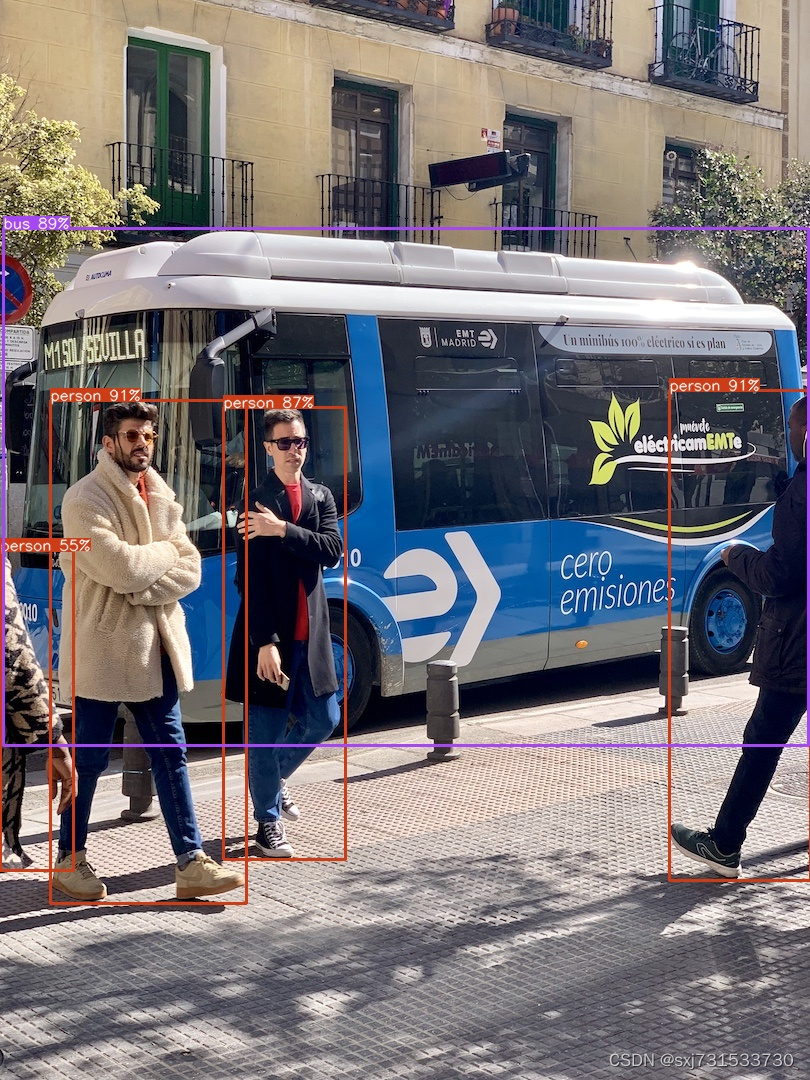
二、c++版本
cmakelists.txt
cmake_minimum_required(VERSION 3.16)
project(untitled10)
set(CMAKE_CXX_FLAGS "-std=c++11")
set(CMAKE_CXX_STANDARD 11)
add_definitions(-DENABLE_DVPP_INTERFACE)
include_directories(/usr/local/samples/cplusplus/common/acllite/include)
include_directories(/usr/local/Ascend/ascend-toolkit/latest/aarch64-linux/include)
find_package(OpenCV REQUIRED)
#message(STATUS ${OpenCV_INCLUDE_DIRS})
#添加头文件
include_directories(${OpenCV_INCLUDE_DIRS})
#链接Opencv库
add_library(libascendcl SHARED IMPORTED)
set_target_properties(libascendcl PROPERTIES IMPORTED_LOCATION /usr/local/Ascend/ascend-toolkit/latest/aarch64-linux/lib64/libascendcl.so)
add_library(libacllite SHARED IMPORTED)
set_target_properties(libacllite PROPERTIES IMPORTED_LOCATION /usr/local/samples/cplusplus/common/acllite/out/aarch64/libacllite.so)
add_executable(untitled10 main.cpp)
target_link_libraries(untitled10 ${OpenCV_LIBS} libascendcl libacllite)main.cpp
#include <opencv2/opencv.hpp>
#include "AclLiteUtils.h"
#include "AclLiteImageProc.h"
#include "AclLiteResource.h"
#include "AclLiteError.h"
#include "AclLiteModel.h"
#include <opencv2/dnn.hpp>
#include <opencv2/imgproc.hpp>
#include <opencv2/highgui.hpp>
#include <algorithm>
using namespace std;
using namespace cv;
typedef enum Result {
SUCCESS = 0,
FAILED = 1
} Result;
std::vector<std::string> CLASS_NAMES = {"person", "bicycle", "car", "motorcycle", "airplane", "bus", "train", "truck", "boat",
"traffic light",
"fire hydrant", "stop sign", "parking meter", "bench", "bird", "cat", "dog", "horse",
"sheep", "cow",
"elephant", "bear", "zebra", "giraffe", "backpack", "umbrella", "handbag", "tie",
"suitcase", "frisbee",
"skis", "snowboard", "sports ball", "kite", "baseball bat", "baseball glove",
"skateboard", "surfboard",
"tennis racket", "bottle", "wine glass", "cup", "fork", "knife", "spoon", "bowl",
"banana", "apple",
"sandwich", "orange", "broccoli", "carrot", "hot dog", "pizza", "donut", "cake",
"chair", "couch",
"potted plant", "bed", "dining table", "toilet", "tv", "laptop", "mouse", "remote",
"keyboard", "cell phone",
"microwave", "oven", "toaster", "sink", "refrigerator", "book", "clock", "vase",
"scissors", "teddy bear",
"hair drier", "toothbrush"};
const std::vector<std::vector<float>> COLOR_LIST = {
{1, 1, 1},
{0.098, 0.325, 0.850},
{0.125, 0.694, 0.929},
{0.556, 0.184, 0.494},
{0.188, 0.674, 0.466},
{0.933, 0.745, 0.301},
{0.184, 0.078, 0.635},
{0.300, 0.300, 0.300},
{0.600, 0.600, 0.600},
{0.000, 0.000, 1.000},
{0.000, 0.500, 1.000},
{0.000, 0.749, 0.749},
{0.000, 1.000, 0.000},
{1.000, 0.000, 0.000},
{1.000, 0.000, 0.667},
{0.000, 0.333, 0.333},
{0.000, 0.667, 0.333},
{0.000, 1.000, 0.333},
{0.000, 0.333, 0.667},
{0.000, 0.667, 0.667},
{0.000, 1.000, 0.667},
{0.000, 0.333, 1.000},
{0.000, 0.667, 1.000},
{0.000, 1.000, 1.000},
{0.500, 0.333, 0.000},
{0.500, 0.667, 0.000},
{0.500, 1.000, 0.000},
{0.500, 0.000, 0.333},
{0.500, 0.333, 0.333},
{0.500, 0.667, 0.333},
{0.500, 1.000, 0.333},
{0.500, 0.000, 0.667},
{0.500, 0.333, 0.667},
{0.500, 0.667, 0.667},
{0.500, 1.000, 0.667},
{0.500, 0.000, 1.000},
{0.500, 0.333, 1.000},
{0.500, 0.667, 1.000},
{0.500, 1.000, 1.000},
{1.000, 0.333, 0.000},
{1.000, 0.667, 0.000},
{1.000, 1.000, 0.000},
{1.000, 0.000, 0.333},
{1.000, 0.333, 0.333},
{1.000, 0.667, 0.333},
{1.000, 1.000, 0.333},
{1.000, 0.000, 0.667},
{1.000, 0.333, 0.667},
{1.000, 0.667, 0.667},
{1.000, 1.000, 0.667},
{1.000, 0.000, 1.000},
{1.000, 0.333, 1.000},
{1.000, 0.667, 1.000},
{0.000, 0.000, 0.333},
{0.000, 0.000, 0.500},
{0.000, 0.000, 0.667},
{0.000, 0.000, 0.833},
{0.000, 0.000, 1.000},
{0.000, 0.167, 0.000},
{0.000, 0.333, 0.000},
{0.000, 0.500, 0.000},
{0.000, 0.667, 0.000},
{0.000, 0.833, 0.000},
{0.000, 1.000, 0.000},
{0.167, 0.000, 0.000},
{0.333, 0.000, 0.000},
{0.500, 0.000, 0.000},
{0.667, 0.000, 0.000},
{0.833, 0.000, 0.000},
{1.000, 0.000, 0.000},
{0.000, 0.000, 0.000},
{0.143, 0.143, 0.143},
{0.286, 0.286, 0.286},
{0.429, 0.429, 0.429},
{0.571, 0.571, 0.571},
{0.714, 0.714, 0.714},
{0.857, 0.857, 0.857},
{0.741, 0.447, 0.000},
{0.741, 0.717, 0.314},
{0.000, 0.500, 0.500}
};
struct Object {
// The object class.
int label{};
// The detection's confidence probability.
float probability{};
// The object bounding box rectangle.
cv::Rect_<float> rect;
};
float clamp_T(float value, float low, float high) {
if (value < low) return low;
if (high < value) return high;
return value;
}
void drawObjectLabels(cv::Mat& image, const std::vector<Object> &objects, unsigned int scale=1) {
// If segmentation information is present, start with that
// Bounding boxes and annotations
for (auto & object : objects) {
// Choose the color
int colorIndex = object.label % COLOR_LIST.size(); // We have only defined 80 unique colors
cv::Scalar color = cv::Scalar(COLOR_LIST[colorIndex][0],
COLOR_LIST[colorIndex][1],
COLOR_LIST[colorIndex][2]);
float meanColor = cv::mean(color)[0];
cv::Scalar txtColor;
if (meanColor > 0.5){
txtColor = cv::Scalar(0, 0, 0);
}else{
txtColor = cv::Scalar(255, 255, 255);
}
const auto& rect = object.rect;
// Draw rectangles and text
char text[256];
sprintf(text, "%s %.1f%%", CLASS_NAMES[object.label].c_str(), object.probability * 100);
int baseLine = 0;
cv::Size labelSize = cv::getTextSize(text, cv::FONT_HERSHEY_SIMPLEX, 0.35 * scale, scale, &baseLine);
cv::Scalar txt_bk_color = color * 0.7 * 255;
int x = object.rect.x;
int y = object.rect.y + 1;
cv::rectangle(image, rect, color * 255, scale + 1);
cv::rectangle(image, cv::Rect(cv::Point(x, y), cv::Size(labelSize.width, labelSize.height + baseLine)),
txt_bk_color, -1);
cv::putText(image, text, cv::Point(x, y + labelSize.height), cv::FONT_HERSHEY_SIMPLEX, 0.35 * scale, txtColor, scale);
}
}
int main() {
const char *modelPath = "../model/yolov8s.om";
const char *fileName="../bus.jpg";
auto image_process_mode="letter_box";
const int label_num=80;
const float nms_threshold = 0.6;
const float conf_threshold = 0.25;
int TOP_K=100;
std::vector<int> iImgSize={640,640};
float resizeScales=1;
cv::Mat iImg = cv::imread(fileName);
int m_imgWidth=iImg.cols;
int m_imgHeight=iImg.rows;
cv::Mat oImg = iImg.clone();
cv::cvtColor(oImg, oImg, cv::COLOR_BGR2RGB);
cv::Mat detect_image;
cv::resize(oImg, detect_image, cv::Size(iImgSize.at(0), iImgSize.at(1)));
float m_ratio_w = 1.f / (iImgSize.at(0) / static_cast<float>(iImg.cols));
float m_ratio_h = 1.f / (iImgSize.at(1) / static_cast<float>(iImg.rows));
float* imageBytes;
AclLiteResource aclResource_;
AclLiteImageProc imageProcess_;
AclLiteModel model_;
aclrtRunMode runMode_;
ImageData resizedImage_;
const char *modelPath_;
int32_t modelWidth_;
int32_t modelHeight_;
AclLiteError ret = aclResource_.Init();
if (ret == FAILED) {
ACLLITE_LOG_ERROR("resource init failed, errorCode is %d", ret);
return FAILED;
}
ret = aclrtGetRunMode(&runMode_);
if (ret == FAILED) {
ACLLITE_LOG_ERROR("get runMode failed, errorCode is %d", ret);
return FAILED;
}
// init dvpp resource
ret = imageProcess_.Init();
if (ret == FAILED) {
ACLLITE_LOG_ERROR("imageProcess init failed, errorCode is %d", ret);
return FAILED;
}
// load model from file
ret = model_.Init(modelPath);
if (ret == FAILED) {
ACLLITE_LOG_ERROR("model init failed, errorCode is %d", ret);
return FAILED;
}
// data standardization
float meanRgb[3] = {0, 0, 0};
float stdRgb[3] = {1/255.0f, 1/255.0f, 1/255.0f};
int32_t channel = detect_image.channels();
int32_t resizeHeight = detect_image.rows;
int32_t resizeWeight = detect_image.cols;
imageBytes = (float *) malloc(channel * (iImgSize.at(0)) * (iImgSize.at(1)) * sizeof(float));
memset(imageBytes, 0, channel * (iImgSize.at(0)) * (iImgSize.at(1)) * sizeof(float));
// image to bytes with shape HWC to CHW, and switch channel BGR to RGB
for (int c = 0; c < channel; ++c) {
for (int h = 0; h < resizeHeight; ++h) {
for (int w = 0; w < resizeWeight; ++w) {
int dstIdx = c * resizeHeight * resizeWeight + h * resizeWeight + w;
imageBytes[dstIdx] = static_cast<float>(
(detect_image.at<cv::Vec3b>(h, w)[c] -
1.0f * meanRgb[c]) * 1.0f * stdRgb[c] );
}
}
}
std::vector <InferenceOutput> inferOutputs;
ret = model_.CreateInput(static_cast<void *>(imageBytes),
channel * iImgSize.at(0) * iImgSize.at(1) * sizeof(float));
if (ret == FAILED) {
ACLLITE_LOG_ERROR("CreateInput failed, errorCode is %d", ret);
return FAILED;
}
// inference
ret = model_.Execute(inferOutputs);
if (ret != ACL_SUCCESS) {
ACLLITE_LOG_ERROR("execute model failed, errorCode is %d", ret);
return FAILED;
}
float *rawData = static_cast<float *>(inferOutputs[0].data.get());
std::vector<cv::Rect> bboxes;
std::vector<float> scores;
std::vector<int> labels;
std::vector<int> indices;
auto numChannels =84;
auto numAnchors =8400;
auto numClasses = CLASS_NAMES.size();
cv::Mat output = cv::Mat(numChannels, numAnchors, CV_32F,rawData);
output = output.t();
// Get all the YOLO proposals
for (int i = 0; i < numAnchors; i++) {
auto rowPtr = output.row(i).ptr<float>();
auto bboxesPtr = rowPtr;
auto scoresPtr = rowPtr + 4;
auto maxSPtr = std::max_element(scoresPtr, scoresPtr + numClasses);
float score = *maxSPtr;
if (score > conf_threshold) {
float x = *bboxesPtr++;
float y = *bboxesPtr++;
float w = *bboxesPtr++;
float h = *bboxesPtr;
float x0 = clamp_T((x - 0.5f * w) * m_ratio_w, 0.f, m_imgWidth);
float y0 =clamp_T((y - 0.5f * h) * m_ratio_h, 0.f, m_imgHeight);
float x1 = clamp_T((x + 0.5f * w) * m_ratio_w, 0.f, m_imgWidth);
float y1 = clamp_T((y + 0.5f * h) * m_ratio_h, 0.f, m_imgHeight);
int label = maxSPtr - scoresPtr;
cv::Rect_<float> bbox;
bbox.x = x0;
bbox.y = y0;
bbox.width = x1 - x0;
bbox.height = y1 - y0;
bboxes.push_back(bbox);
labels.push_back(label);
scores.push_back(score);
}
}
// Run NMS
cv::dnn::NMSBoxes(bboxes, scores, conf_threshold, nms_threshold, indices);
std::vector<Object> objects;
// Choose the top k detections
int cnt = 0;
for (auto& chosenIdx : indices) {
if (cnt >= TOP_K) {
break;
}
Object obj{};
obj.probability = scores[chosenIdx];
obj.label = labels[chosenIdx];
obj.rect = bboxes[chosenIdx];
objects.push_back(obj);
cnt += 1;
}
drawObjectLabels( iImg, objects);
cv::imwrite("../result_c++.jpg",iImg);
model_.DestroyResource();
imageProcess_.DestroyResource();
aclResource_.Release();
return SUCCESS;
}
测试结果
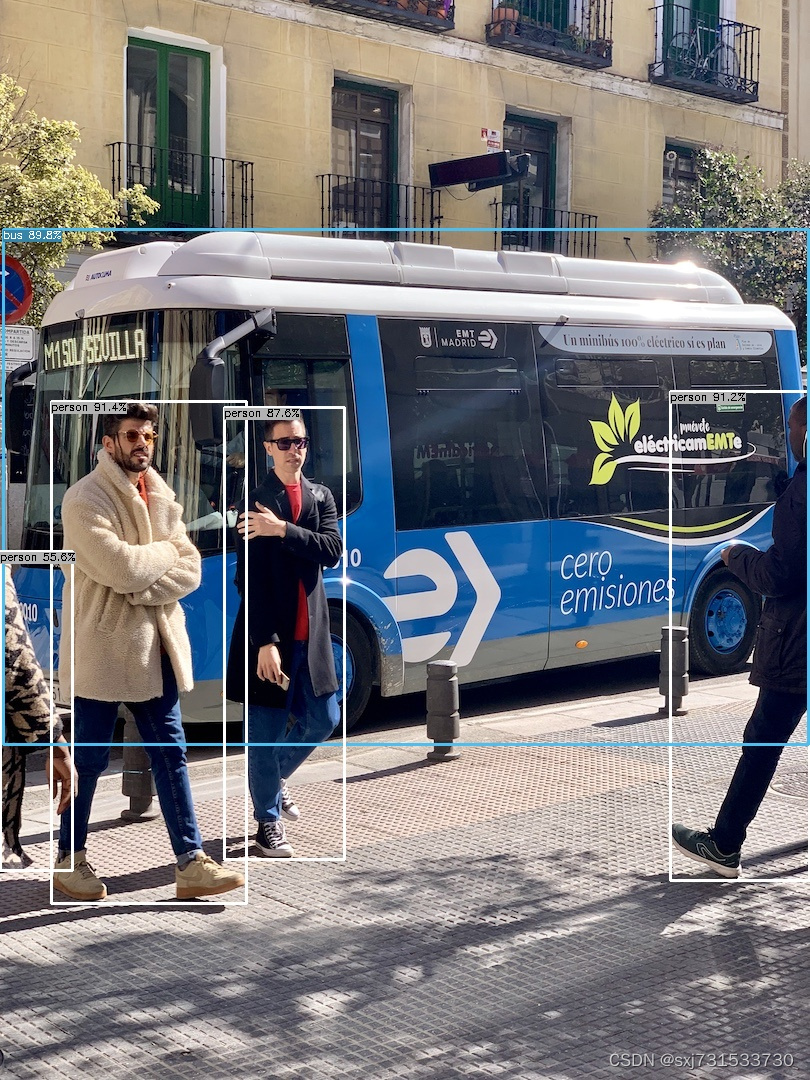
三、旋转目标
待需


